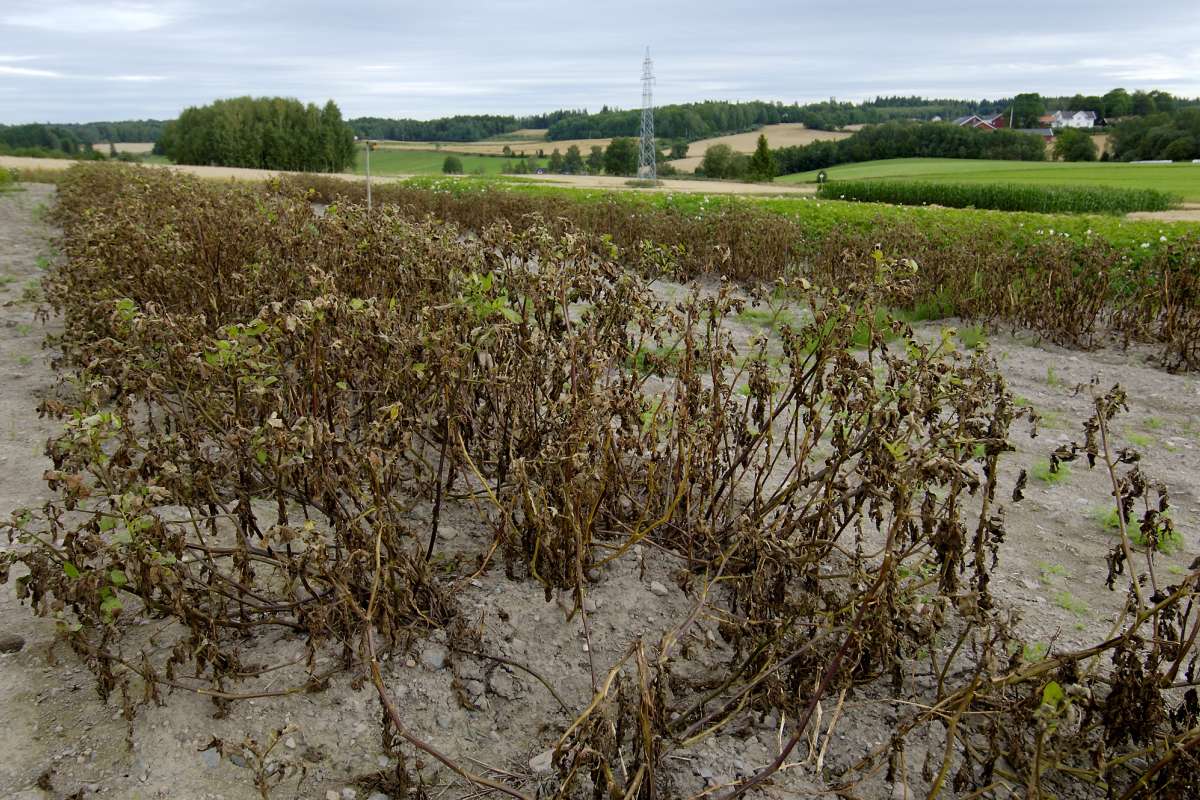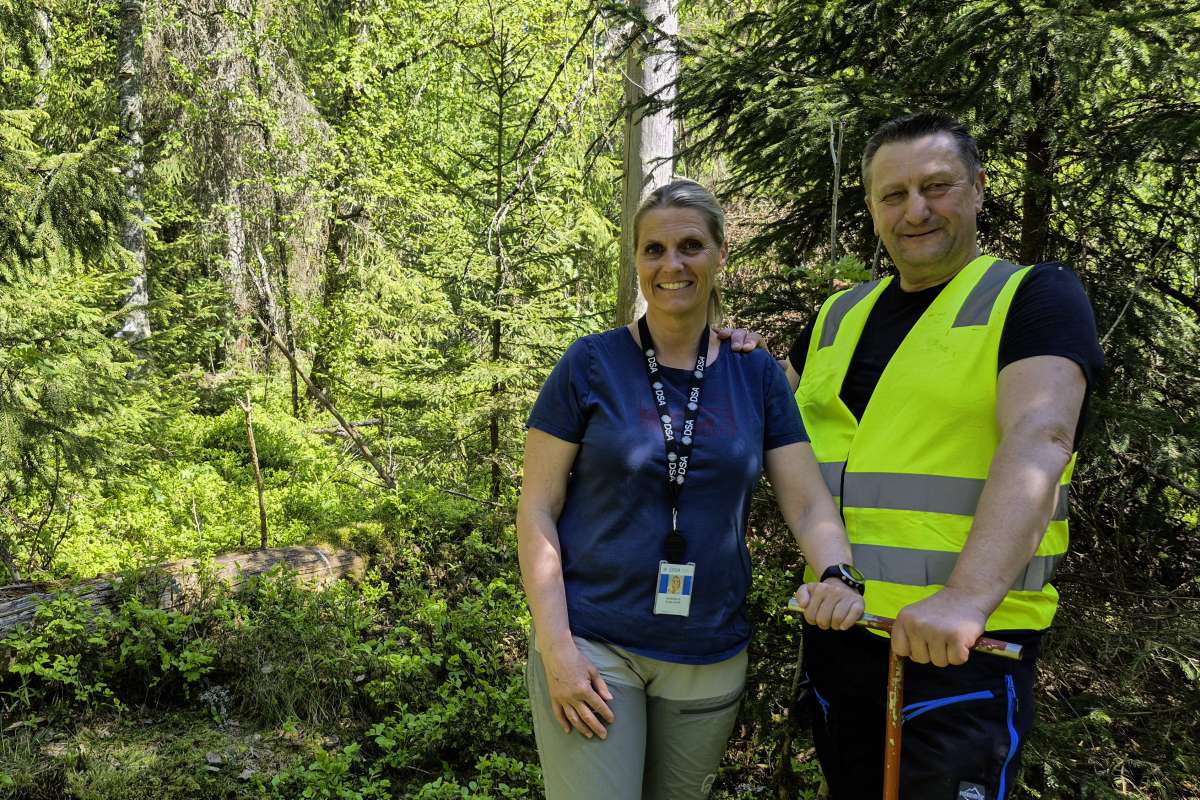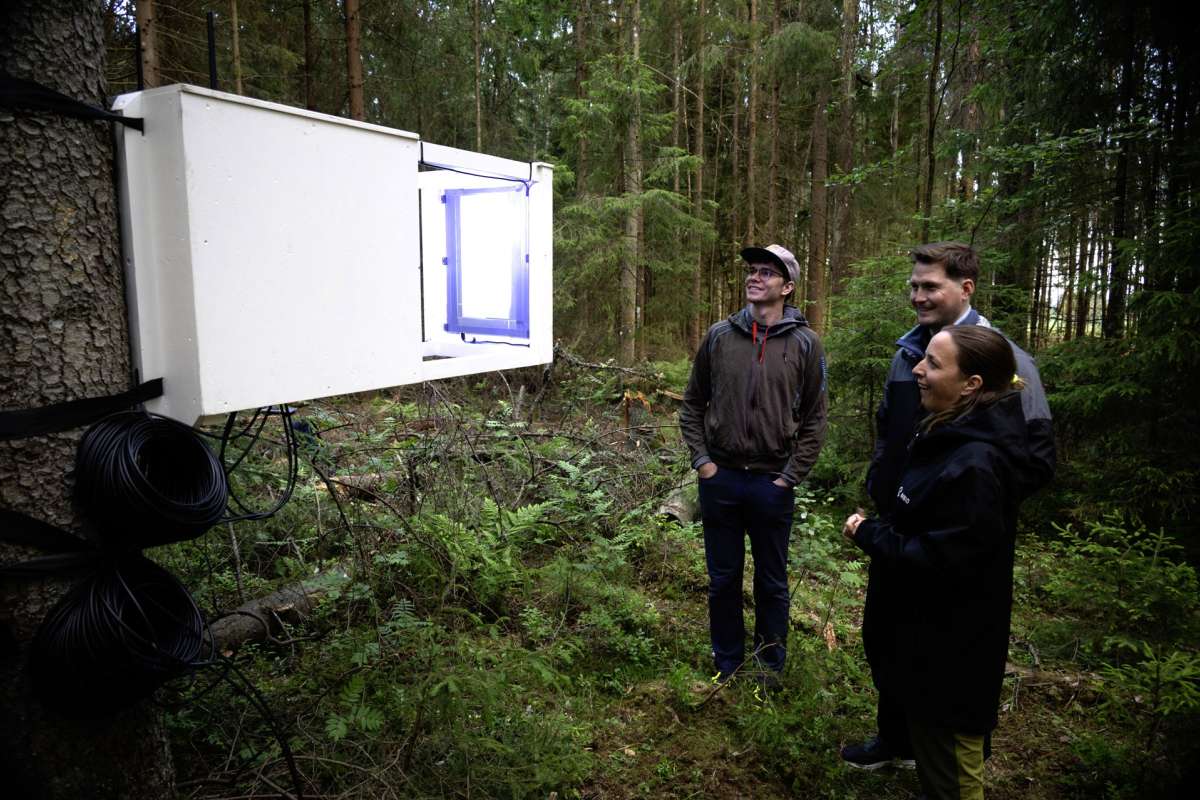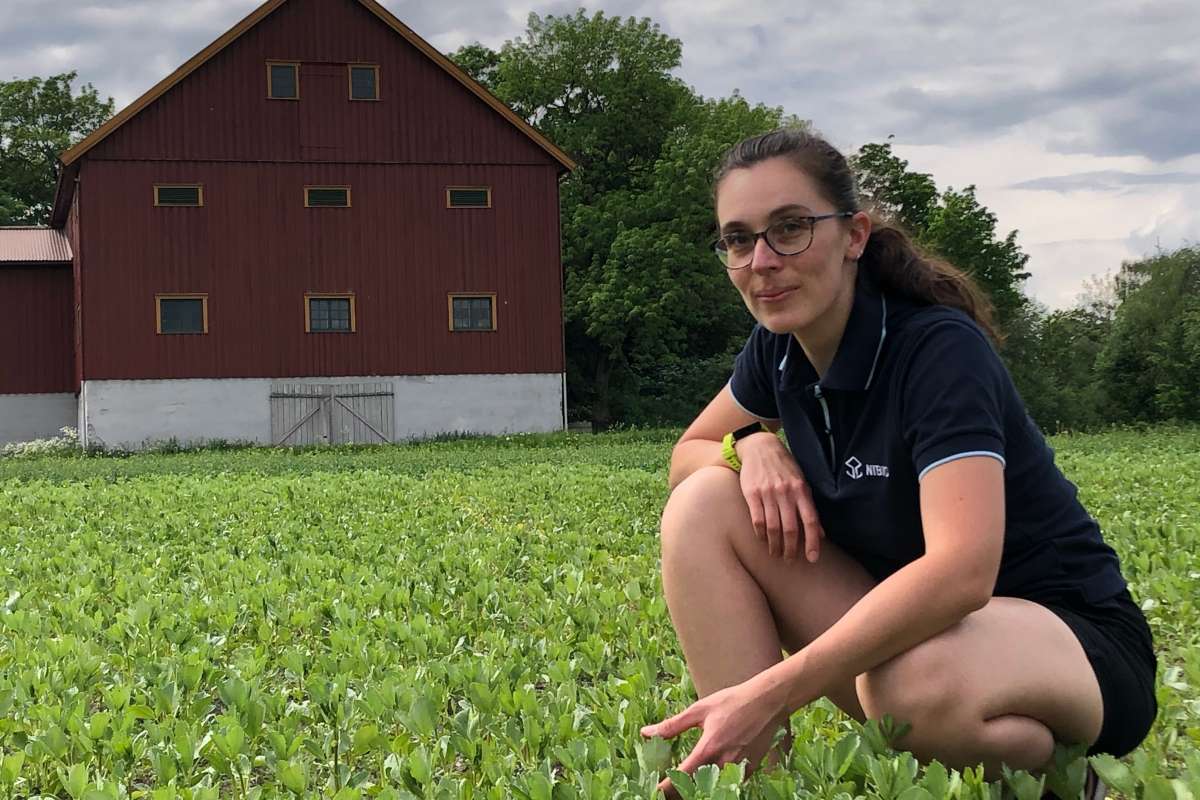Many opportunities with faba beans and peas
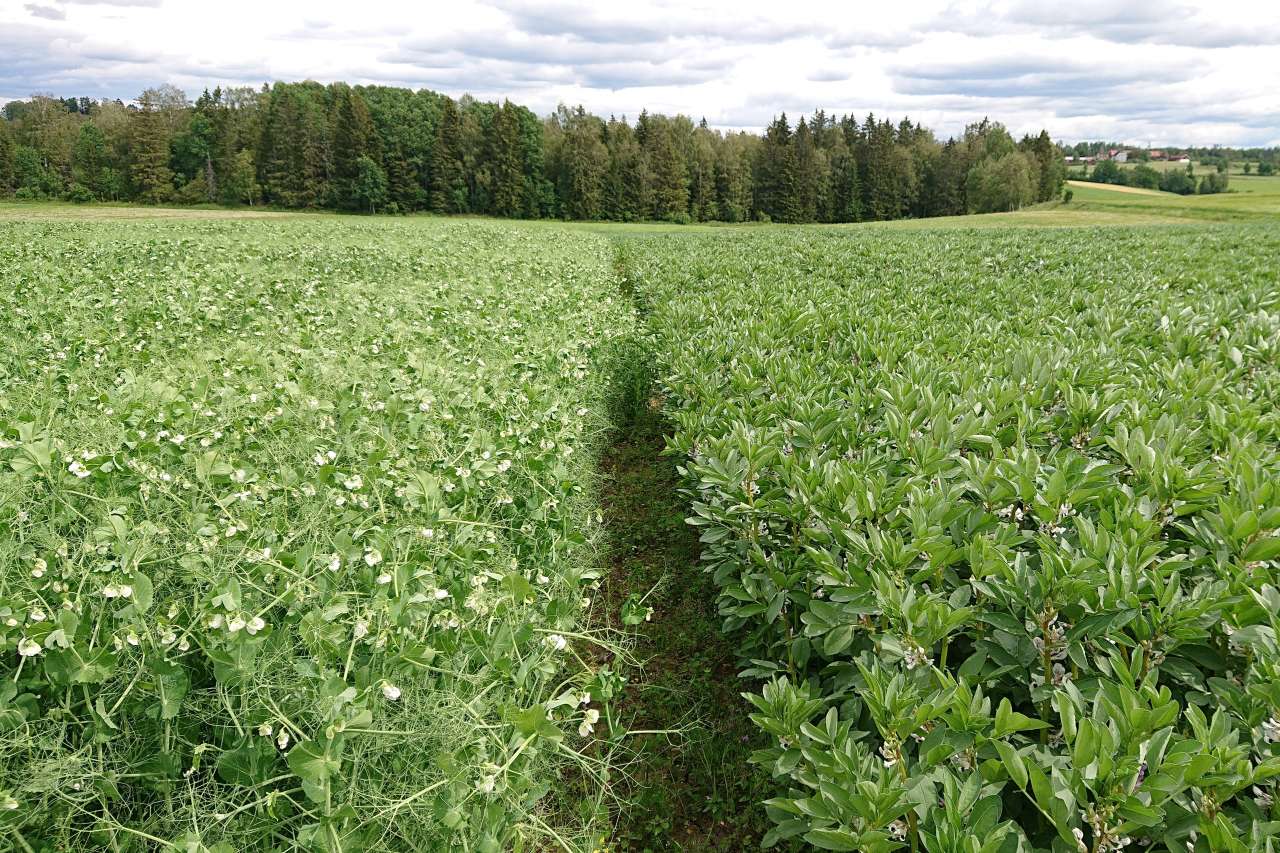
Faba beans, also known as horse beans, broad beans, or field beans, are protein-rich crops that fix nitrogen from the air and therefore do not require fertilization. Photo: Anne Marthe Lundby
A new doctoral study reveals that it is the seed’s moisture content and developmental stage that determine when protein, starch, and smaller carbohydrates accumulate in faba beans and peas. Temperature does not directly affect this process. The research also shows that starter fertilization or seed inoculation with Rhizobium bacteria has limited impact on seed accumulation and yield.
Through her PhD work, Anne Marthe Lundby from NIBIO has provided valuable insights into seed development, the accumulation of protein, starch, and carbohydrates, and the ripening process of peas (Pisum sativum L.) and faba beans (Vicia faba L.) in northern latitudes. The study included both field trials and controlled climate experiments. Her findings support the most common cultivation practices in Norway, where neither Rhizobium inoculation nor starter fertilization is used when growing crops on well-maintained soils. These soils already contain sufficient Rhizobium bacteria, which live in symbiosis with legumes and fix nitrogen from the air.
Both faba beans and peas developed a higher number of root nodules when inoculated with Rhizobium, but this had no effect on yield or protein content in either crop. In faba beans, 80 to 90 percent of the nitrogen came from nitrogen fixation — in other words, most of the nitrogen originated from biological nitrogen fixation.
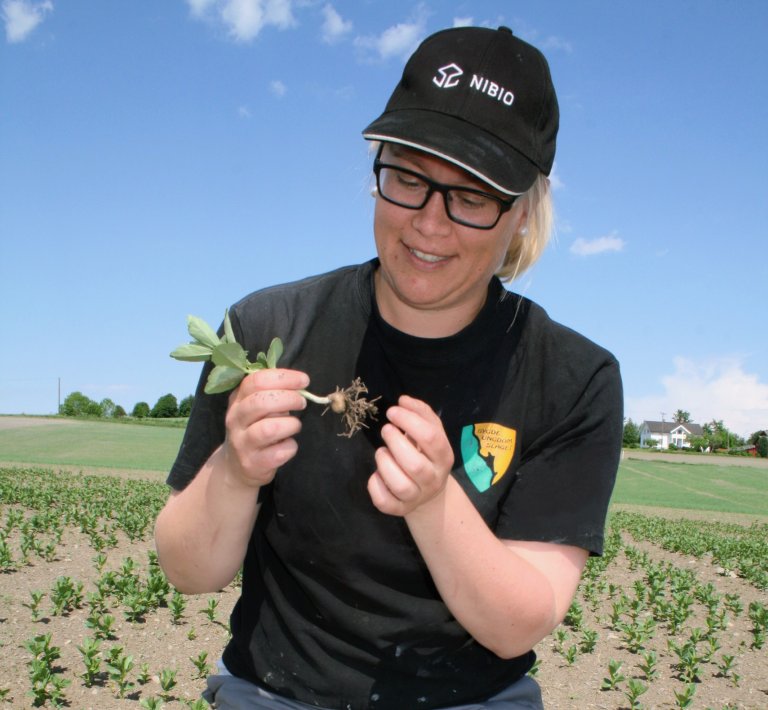
The search for the best-adapted varieties
Lundby’s findings show that lower temperatures influence the time of maturation, but the nutrient content of the seeds remains the same when compared at the same developmental stage. In other words, seed quality remains stable — a positive result for Norway.
“One of the biggest challenges in Norway, especially for faba beans, is the short growing season. That’s why it’s important to continue evaluating varieties through field trials at different locations across the country, to identify those best suited to different environments,” Lundby explains.
She continues:
“We don’t have domestic breeding programs for peas and faba beans in Norway, so we rely on foreign varieties. One of the major challenges — especially for faba beans — is the lack of access to varieties adapted to Norwegian conditions. There are significant differences between early and late-maturing varieties grown in Norway. We need more varieties that fall between these extremes. Breeding stable, medium-late varieties adapted to our conditions could help expand cultivation potential in Norway.”
“There is also a need for more knowledge about Rhizobium strains in Norwegian agricultural soils. Nitrogen fixation is a complex interaction influenced by many factors. It would also be interesting to test the use of starter fertilization and Rhizobium inoculation on other soil types, such as nutrient-poor sandy soils,” Lundby adds.
Great potential for sustainable plant protein
Eighteen years ago, NIBIO and the Norwegian Agricultural Advisory Service (NLR) launched the first variety trials with faba beans. Beans and peas are among the world’s oldest cultivated crops, with a history stretching back 10,000 years. Due to their high protein content, legumes are considered the second most economically important plant family globally, cultivated for both food and feed.
“These are protein-rich crops, and they can replace some of the plant proteins currently being imported, such as soy. Peas and faba beans are the most commonly grown pulse legumes in the Nordic countries. Increasing legume production will contribute to better crop rotation in cereal production and strengthen Norway’s self-sufficiency by offering a locally produced alternative to imported protein for both food and feed,” says Lundby.
“The area under cultivation for faba beans and peas in Norway has grown in recent years. In 2013, this amounted to just 10,000 decares, but by 2024 the area had increased to around 48,000 decares of faba beans and 38,000 decares of peas. This area can still be expanded by optimizing crop rotation in cereal farming. There is growing demand for Norwegian-grown plant protein, both for food and feed. Consumers are asking for more plant-based protein, but few products in stores are based on Norwegian raw materials. At the same time, the feed industry wants to reduce its reliance on imported protein,” Lundby explains.
The nitrogen-fixing ability of peas and faba beans gives them an important role in sustainable agriculture.
“Legumes can fix nitrogen through root nodules formed by bacteria, which benefits the crops that follow in the rotation. Growing legumes can also reduce disease levels in cereal crops and improve both yield and grain quality. It’s beneficial to grow legumes in rotation with cereals,” Lundby concludes.
Contacts

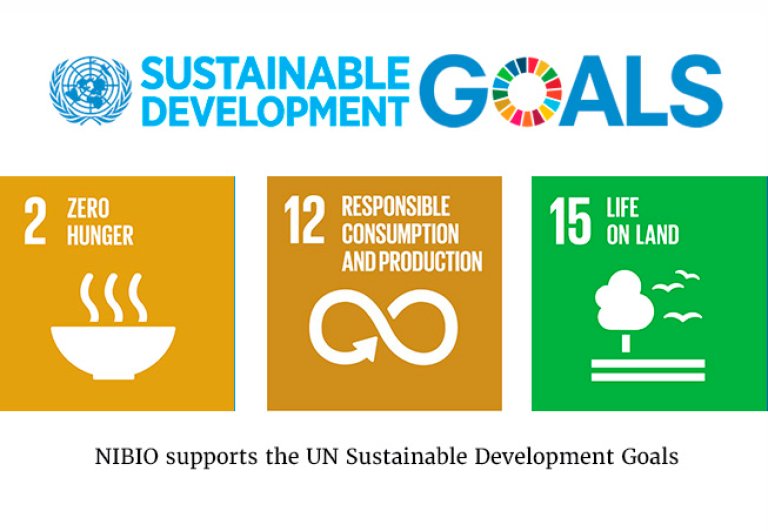
Faba Beans and Peas
Faba beans and peas are protein-rich legumes that can be used for both food and animal feed.
Increasing the cultivation and use of locally produced protein crops may serve as an alternative to replace some of the imported plant proteins.
Inclusion of protein crops in crop rotation improves cereal yields and reduces the incidence of fungal diseases.
Legumes such as faba beans and peas form a symbiotic relationship with nitrogen-fixing bacteria, enabling them to bind nitrogen from the air. Therefore, they do not require fertilization.
In 2024, approximately 48,000 decares of faba beans and 38,000 decares of peas were cultivated in Norway.
Glossary
Rhizobium is a genus of soil bacteria that capture nitrogen from the air and convert it into ammonium. These bacteria form a symbiotic nitrogen-fixing relationship with the roots of legumes, such as faba beans.
Nodules are small growths that form on the roots of legume plants. Within these nodules are Rhizobium bacteria.

Contacts


